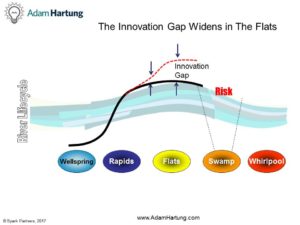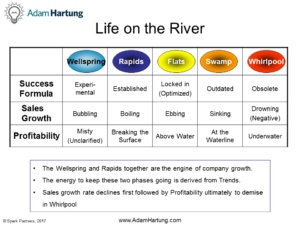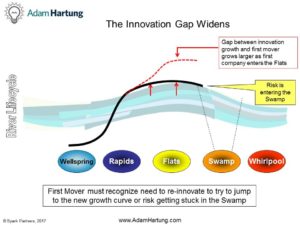Responding to Market Disruptions? Get Ahead of the Next One!

Responding to Market Disruptions? Get Ahead of the Next One!
Market Threat Assessments
Recent studies of senior managers have shown that being blindsided by a disruption is the largest unresolved concern in strategy development today. That fear is too often real because disruption typically begins where it is least visible to management- on the fringes of the existing target markets. And, once the disruption “pirate ship” is sighted on the horizon, not only is it probably too late, but companies react poorly.
Threat Responses
Sadly, given the risk profile and limited experience in innovation, these are often sustaining innovations which are swept aside by the wave of disruption.
A very large example is when Microsoft fell behind in the  mobile market in 2014 and purchased Nokia, a weak player in mobile phones to get access to this market. The joint project, the Lumia phone, failed to catch on and Microsoft’s share fell by 50%- fail. Cisco tried to catch up with the photography trend by acquiring Pure Digital, the maker of low cost Flip cameras. Unfortunately, shortly after the acquisition, the high-resolution sensors included in smartphones took photography to a new level. Bye, Flip! Trend monitoring would have predicted this natural evolution as a high risk threat.
mobile market in 2014 and purchased Nokia, a weak player in mobile phones to get access to this market. The joint project, the Lumia phone, failed to catch on and Microsoft’s share fell by 50%- fail. Cisco tried to catch up with the photography trend by acquiring Pure Digital, the maker of low cost Flip cameras. Unfortunately, shortly after the acquisition, the high-resolution sensors included in smartphones took photography to a new level. Bye, Flip! Trend monitoring would have predicted this natural evolution as a high risk threat.
Anticipate Threats
To anticipate external changes, marketing departments have embraced big data as a powerful tool to help companies identify new markets and consumer preferences. These tools use the past to predict the short-term future which is reasonable in a steady market. The problem is that big data cannot accurately anticipate dynamic disruptions.
But, you and your staff can.
What’s on your company’s radar today?
Let us do an opportunity assessment for your organization. For less than your annual gym cost, or auto insurance premium, we could likely identify some good opportunities your blinders are hiding. Read my Assessment Page to learn more.
Add me to the email list!
Adam Hartung, Create Marketplace Disruption


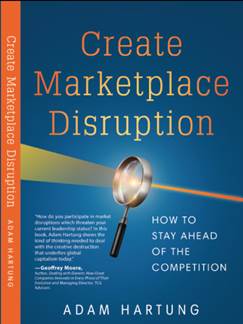

 Market Sensing is often viewed as gathering traditional industry data such as existing customers, existing competitors and existing technology evolution. Unfortunately, that information is woefully incomplete. Case studies and product failure analyses are filled with stories of how an upstart company, on nobody’s radar, created a new product, category or even a new market obsoleting the existing industry and changing key metrics.
Market Sensing is often viewed as gathering traditional industry data such as existing customers, existing competitors and existing technology evolution. Unfortunately, that information is woefully incomplete. Case studies and product failure analyses are filled with stories of how an upstart company, on nobody’s radar, created a new product, category or even a new market obsoleting the existing industry and changing key metrics.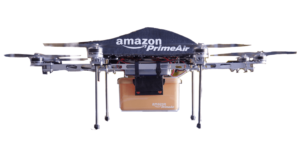 For example, no one was considering delivering packages via drones, until news reported drones hovering over prisons to drop items. Next, DHL and Amazon said they were testing the idea for packages, and suddenly the competition for home and medical delivery changed dramatically. But few affected companies looked hard at this trend and were tracking drone size payload capacity, operational distance, navigation technology, etc.
For example, no one was considering delivering packages via drones, until news reported drones hovering over prisons to drop items. Next, DHL and Amazon said they were testing the idea for packages, and suddenly the competition for home and medical delivery changed dramatically. But few affected companies looked hard at this trend and were tracking drone size payload capacity, operational distance, navigation technology, etc.